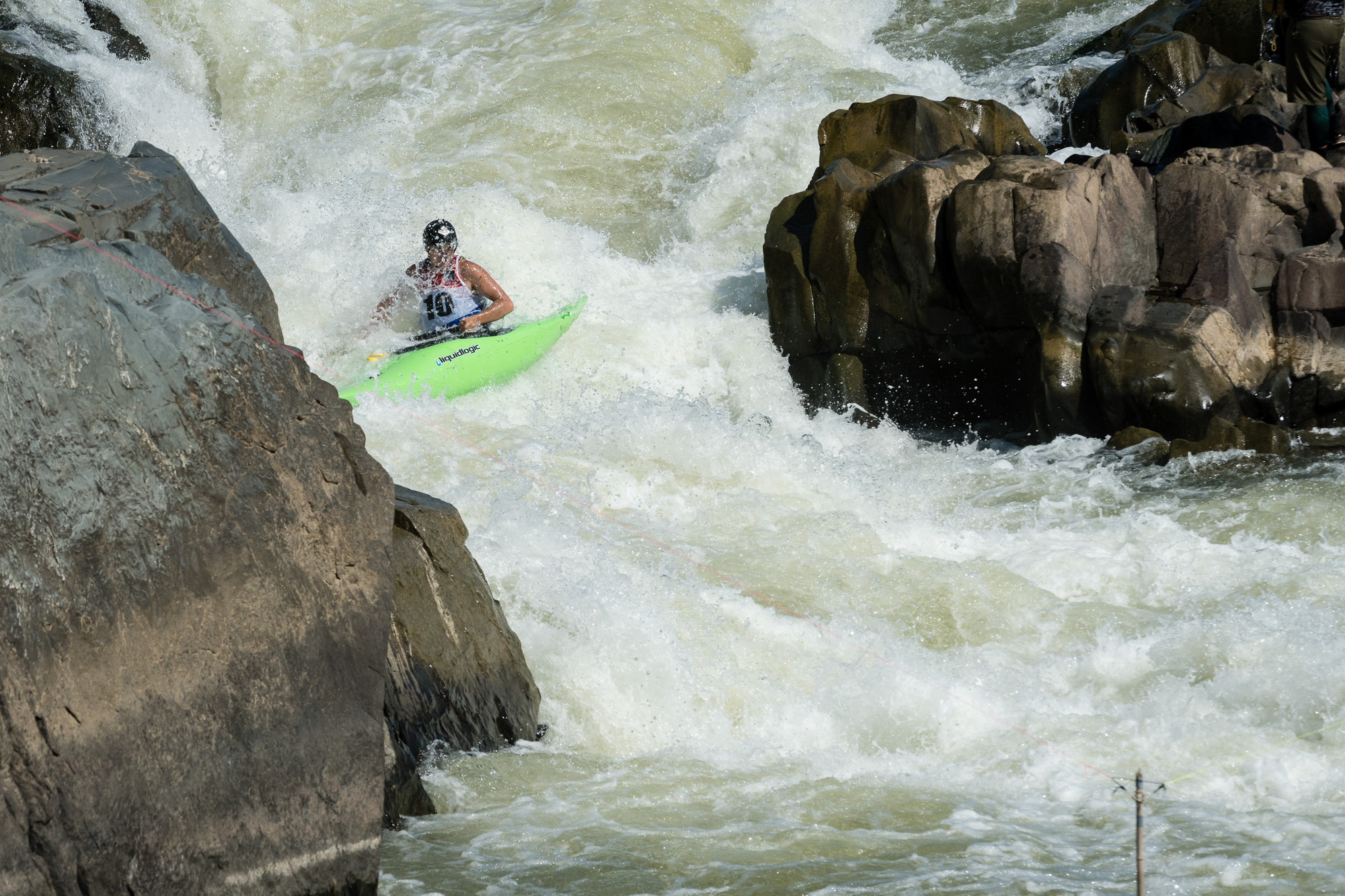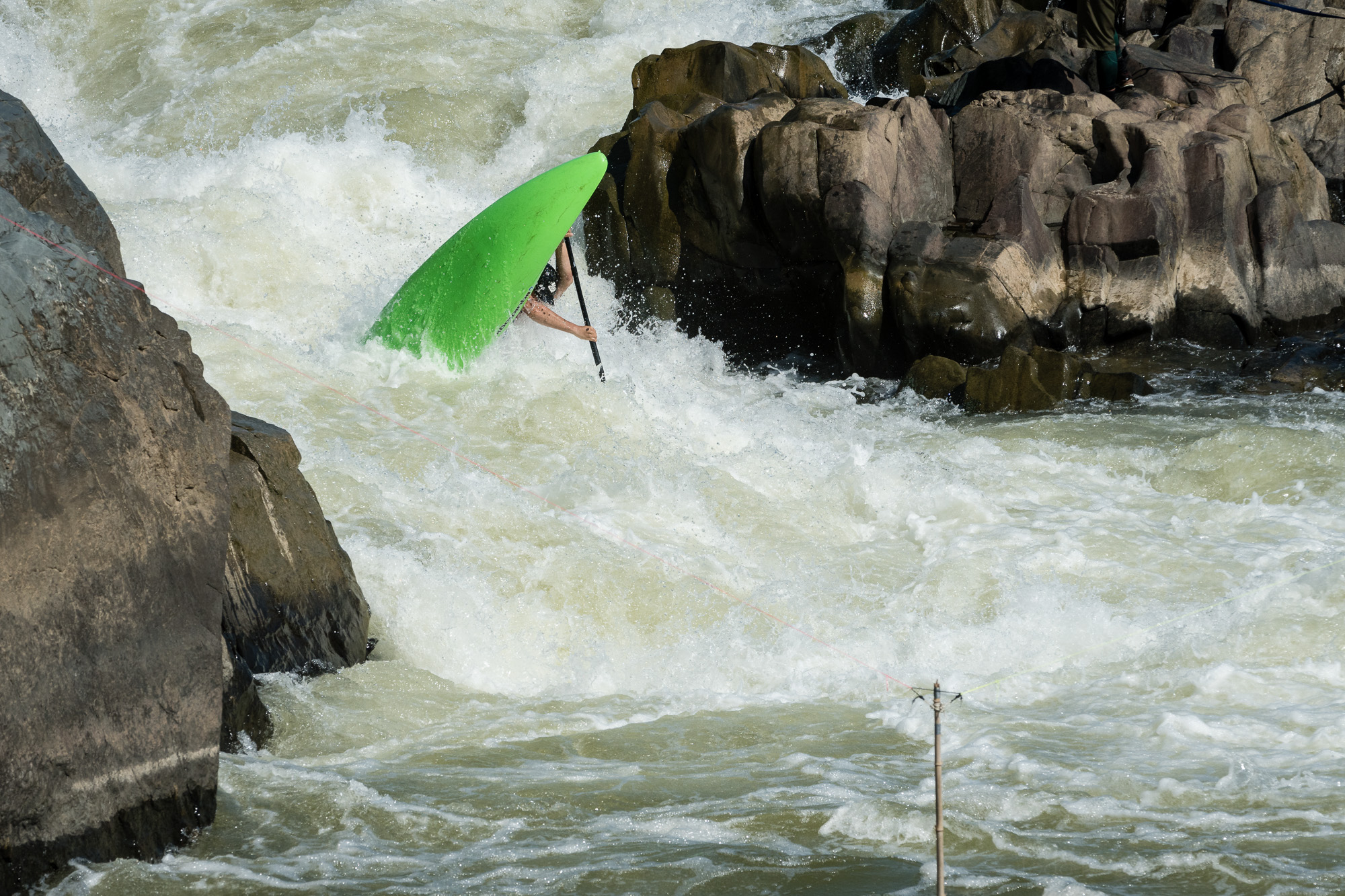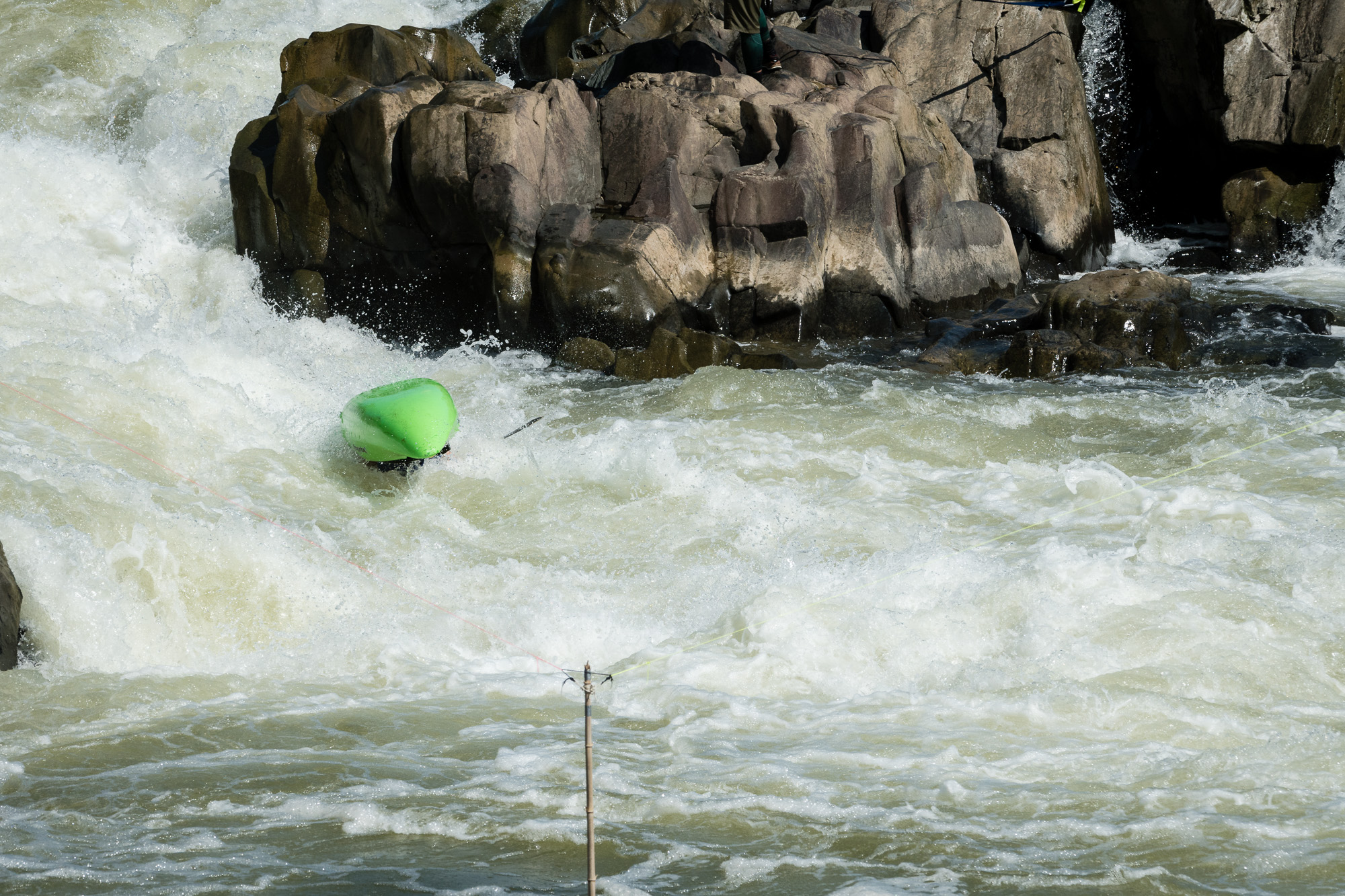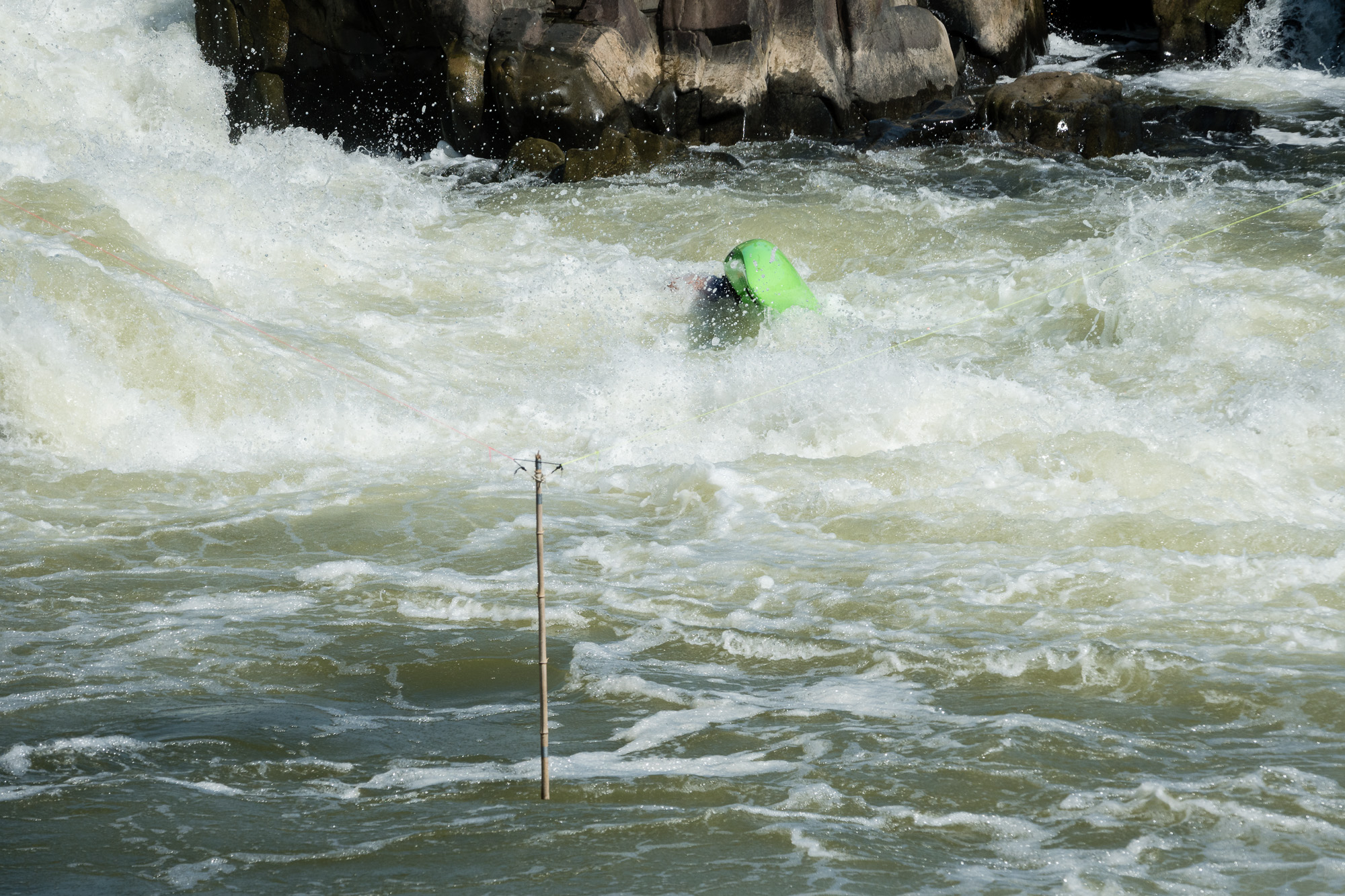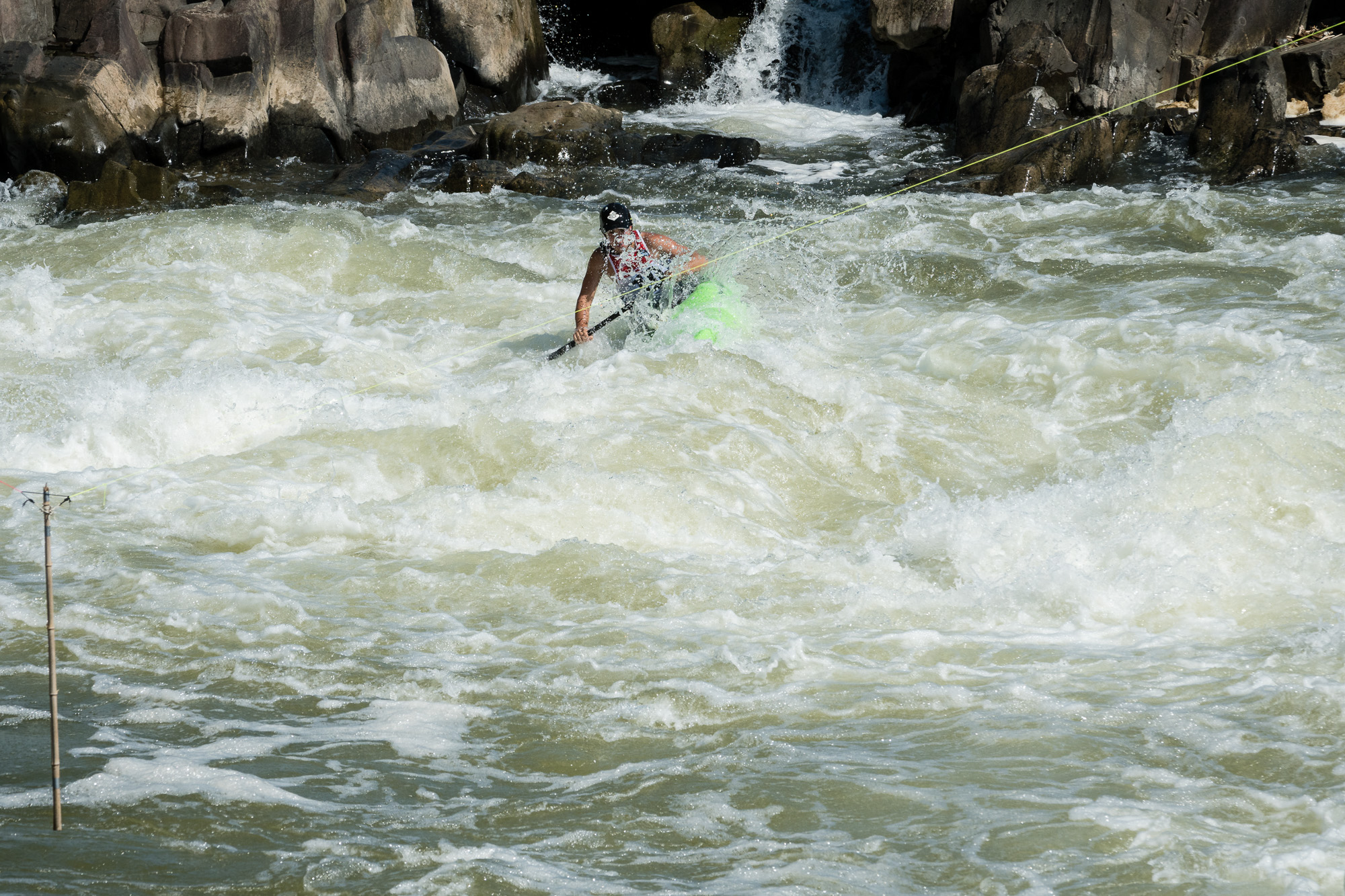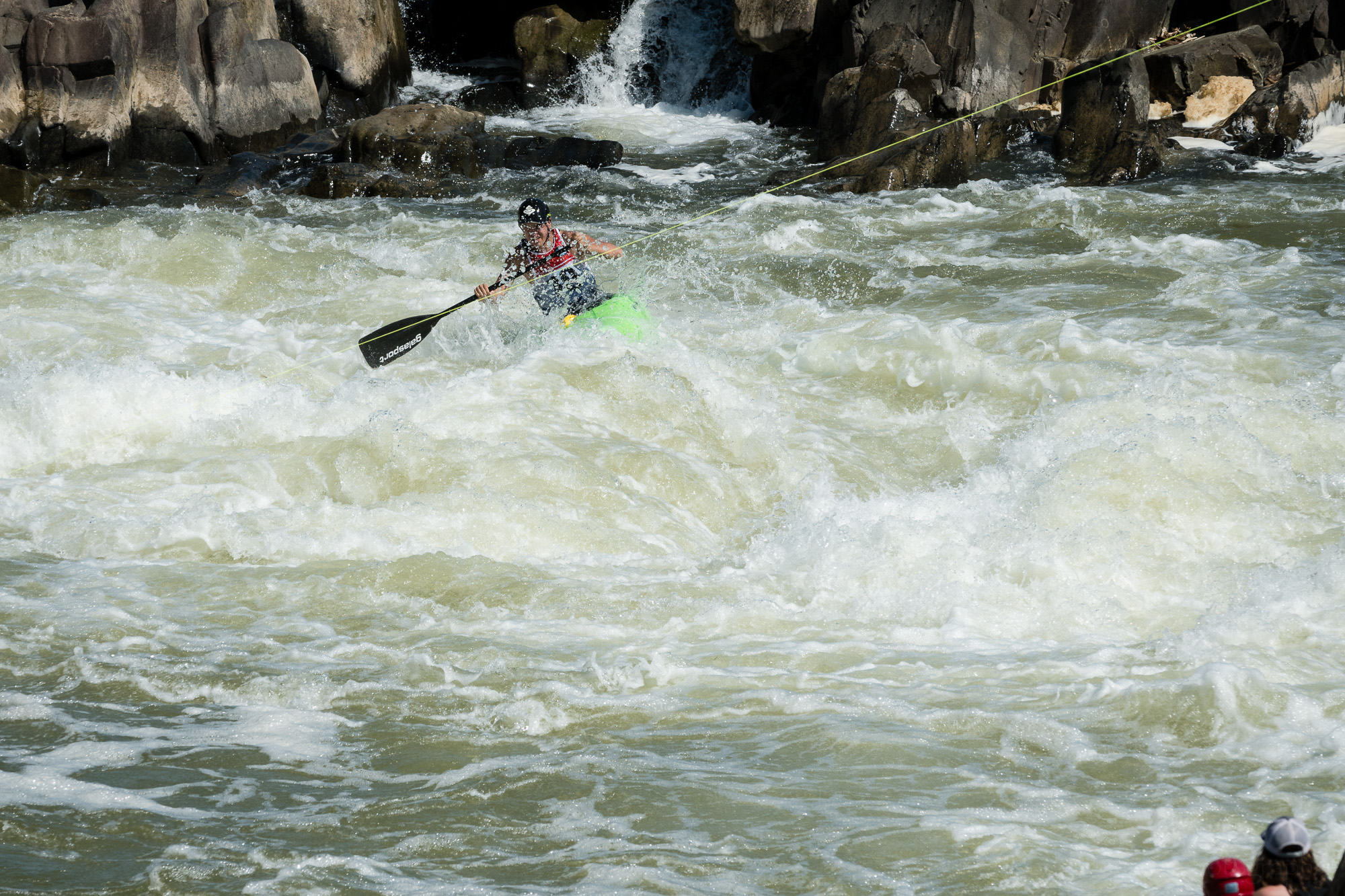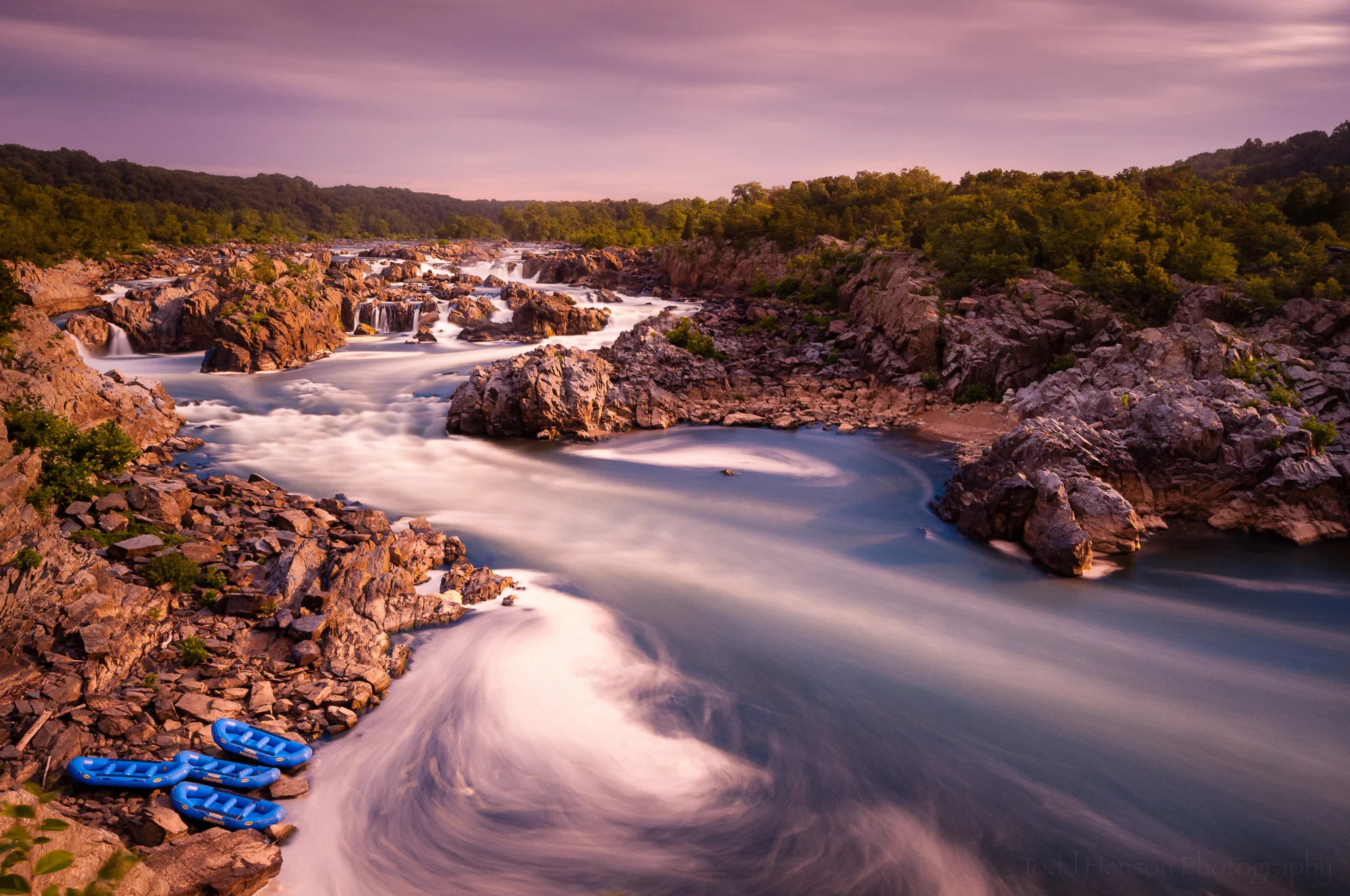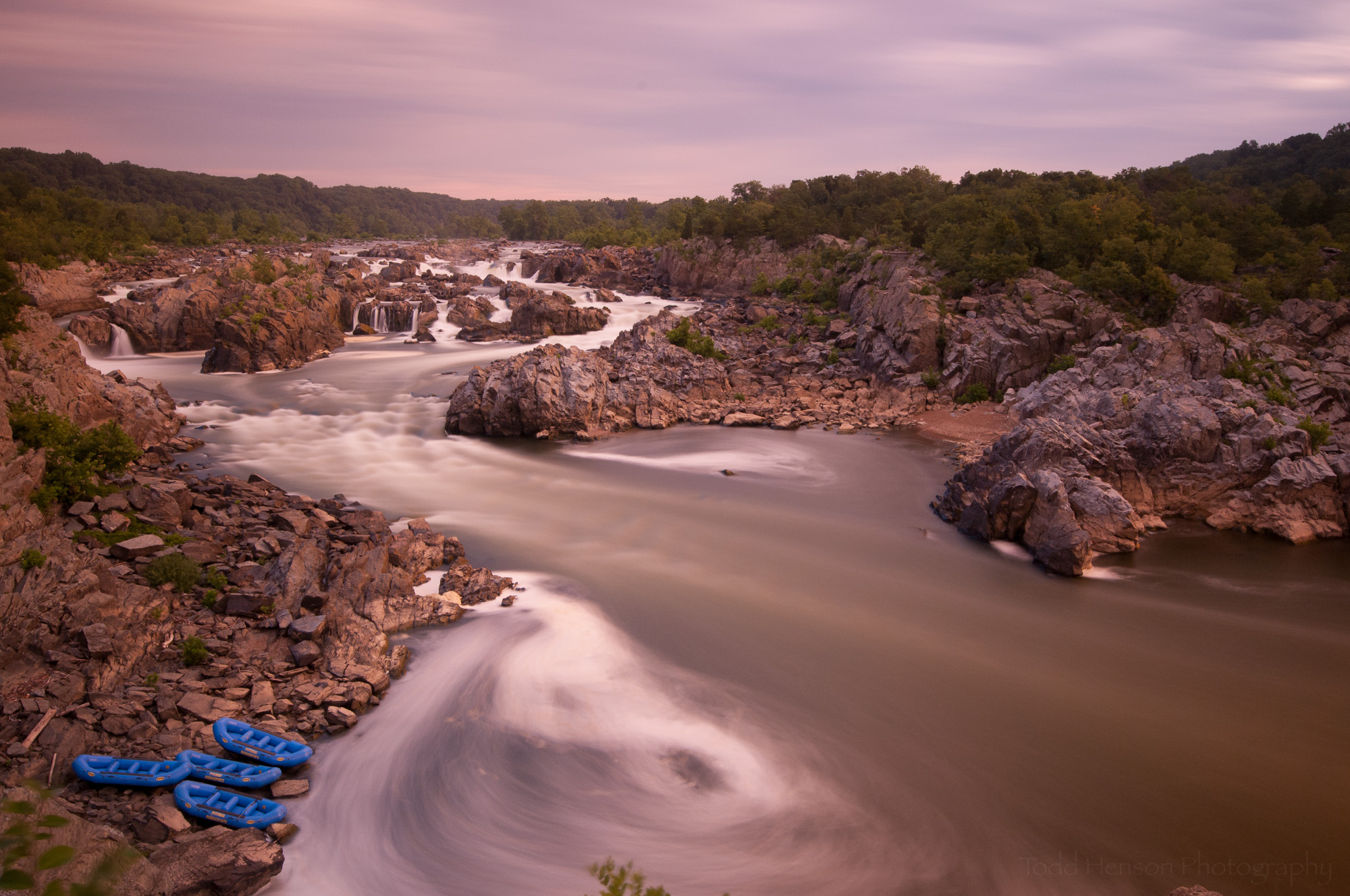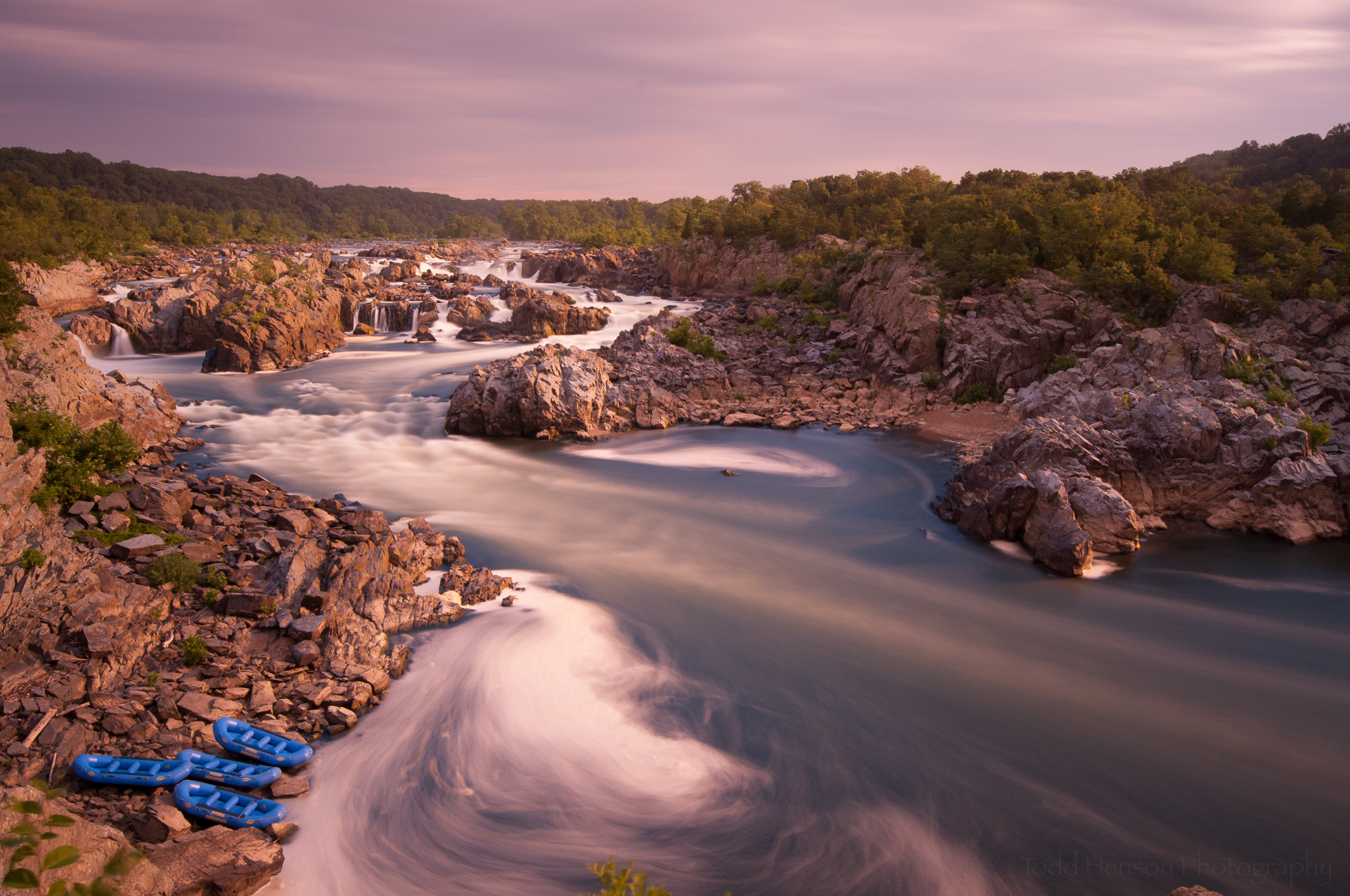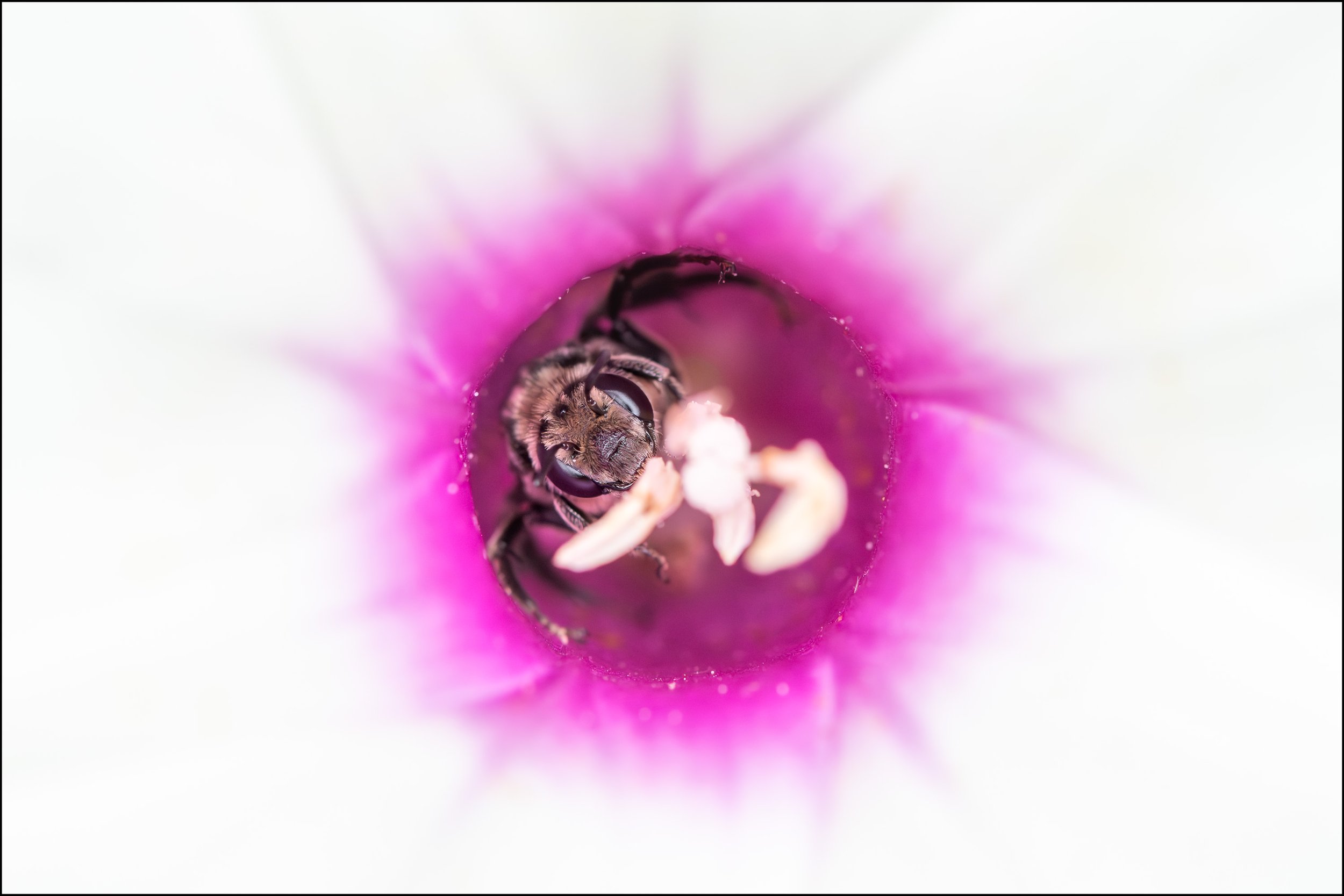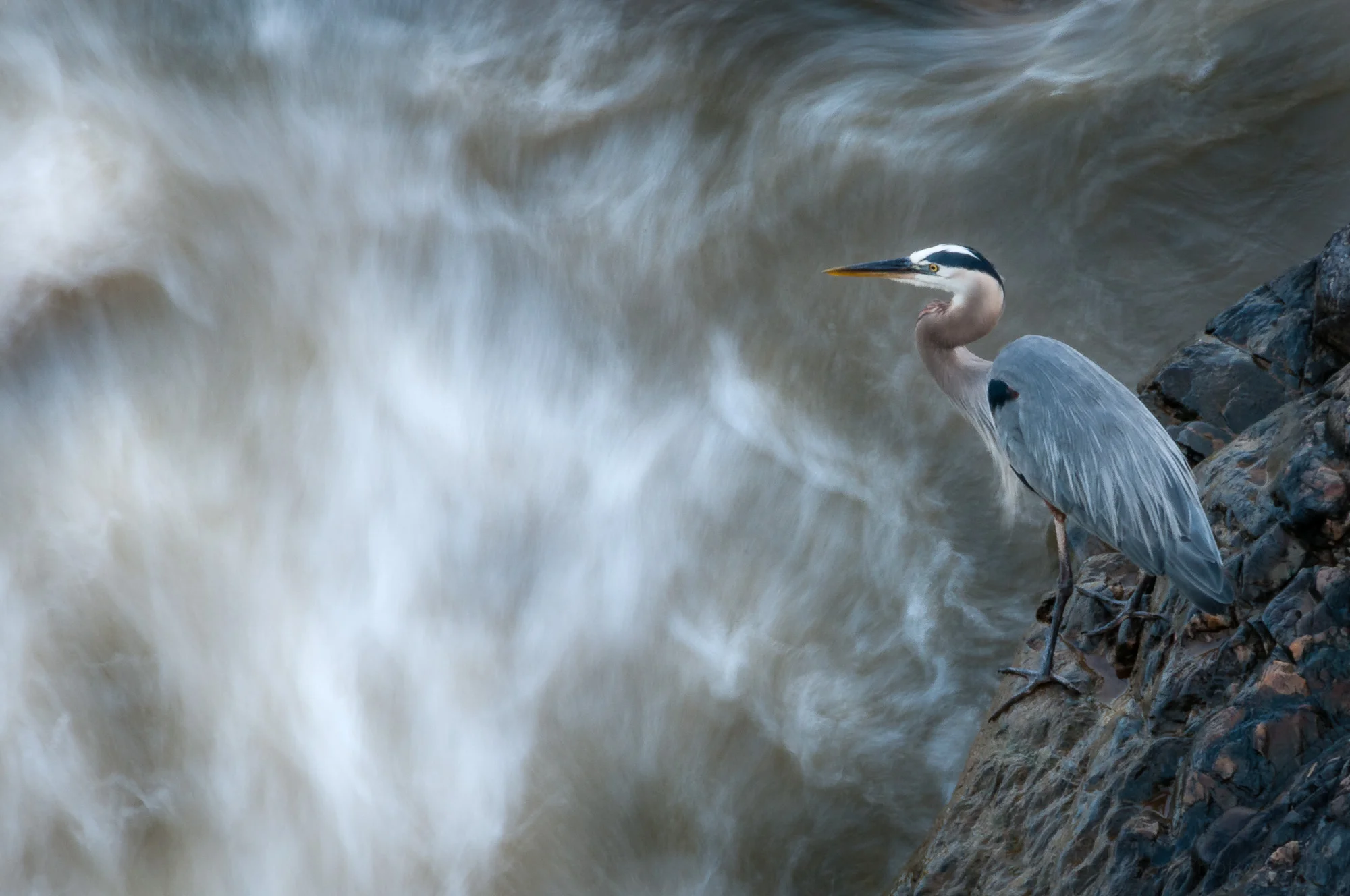In a previous post I showed some of the amazing facial expressions on the athletes as they competed in the 2017 Great Falls Race, part of the Potomac River Festival, held at Great Falls on the Potomac River just outside Washington, D.C. This time around we’ll look at the slalom event, where kayakers and canoeists have to maneuver around hanging gates while moving downriver through rapids and over large falls.
The Slalom Course
Layout of the slalom course, part of the 2017 Great Falls Race.
I’ve included a photograph that shows the course of the slalom event. The pink line is the general path most folks took downriver. The red ovals are the gates. These are poles hanging from ropes strung across the river. The athletes have to maneuver around these gates in specific ways before heading further downriver, or they receive penalties. The race is scored based on how fast they make it from start to finish, along with any penalties they accumulate for missing or hitting gates.
The racers begin in the calmer water just above U-Hole. Click on the image for a better view and you might see a blue kayak up there waiting for his run. They drop into U-Hole and around the first gate before moving into S-Turn.
There are many ways to approach S-Turn. Some approach straight on from the gate hugging closely to the right side of the bank then angling into the turn. Others move more towards the left bank and turn before hitting the rapid, then rush straight through the rapids.
After S-Turn they need to turn their boat to get around the next gate, and from there quickly begin moving towards The Crack. Finally, after the large plunge from The Crack they need to recover and make it around the final gate. It’s easy to see their path on the photo, but it’s not nearly so easy for them to actually do it, as you’ll see in some of the images below.
Trouble Along the Way
This isn’t an easy race and sometimes racers run into trouble along the way.
Tad Dennis (bib 12) hit the middle gate after making it past S-Turn. He was canoeing instead of kayaking for this race. Notice he uses a single-sided paddle versus the double-sided paddle used by the kayakers.
Tad Dennis hits the middle slalom gate.
Here is a sequence of images showing a rough spot in the race for Jordan Poffenberger (bib 10). He was moving through S-Turn when the water flipped his kayak. But he recovered quickly and continued the race. This entire sequence covers no more than 4 seconds. This is fast moving water.
Running the Course
Here is a short sequence of images showing Geoff Calhoun (bib 1) beginning his slalom run by dropping over U-Hole, around the first gate, then angling towards S-Turn. Notice all the people on the rocks along the river, some tethered to the rocks, watching and ready to provide or call in assistance if there are any major problems.
Geoff Calhoun dropping into U-Hole during the slalom event.
Geoff Calhoun eyeing the slalom gate after dropping through U-Hole.
Geoff Calhoun moves around the first gate during the slalom event.
After the first gate Geoff Calhoun moves into S-Turn during the slalom event.
And now a sequence showing Jason Beakes (bib 5) going through S-Turn and angling towards the 2nd gate. His eyes lock on the gate just as soon as he surfaces from S-Turn. He still has to maneuver out of the flow from S-Turn and head towards the gate, but he is immediately focused on that gate.
Jason Beakes dropping into S-Turn during the slalom event.
During the slalom event Jason Beakes almost disappears behind the wild water in S-Turn. The 2nd slalom gate can be seen at the bottom.
Being propelled out of S-Turn, Jason Beakes' eyes lock onto the next slalom gate.
Before Jason Beakes can reach the next slalom gate he needs to maneuver himself out of the strong current from S-Turn.
After moving past the middle gate Jason heads straight for and over The Crack. He has a very deliberate and controlled descent, never losing control of his kayak. And even though he comes over The Crack at an angle, when he touches down he immediately angles himself around the final gate. Jason Beakes had the fastest run through the slalom and finished it with no penalties.
Jason Beakes enters The Crack during the slalom event.
There's not much room to maneuver in The Crack as Jason Beakes runs the slalom event.
Jason Beakes, exiting the tight confines of The Crack.
I love this image of Jason Beakes holding his paddle ready as he flies over The Crack.
Approaching the bottom at an angle, Jason Beakes prepares himself for the final slalom gate.
Jason Beakes almost disappears when he hits the bottom of The Crack. The slalom gate is now in view to the right.
Jason Beakes moves around the final slalom gate, finishing with the fastest time in this leg of the race.
Favorite Image
My favorite image of the slalom event was Tyler Uthus flying past the final gate after having flown over The Crack.
Tyler Uthus flying past the final slalom gate.
Do you enjoy these posts?
Sign up to receive periodic emails with updates and thoughts. Don’t worry, I won’t spam you. And please consider purchasing artwork or products from my online store, and using my affiliate links in the sidebar to the right when shopping online.
I appreciate your support!
